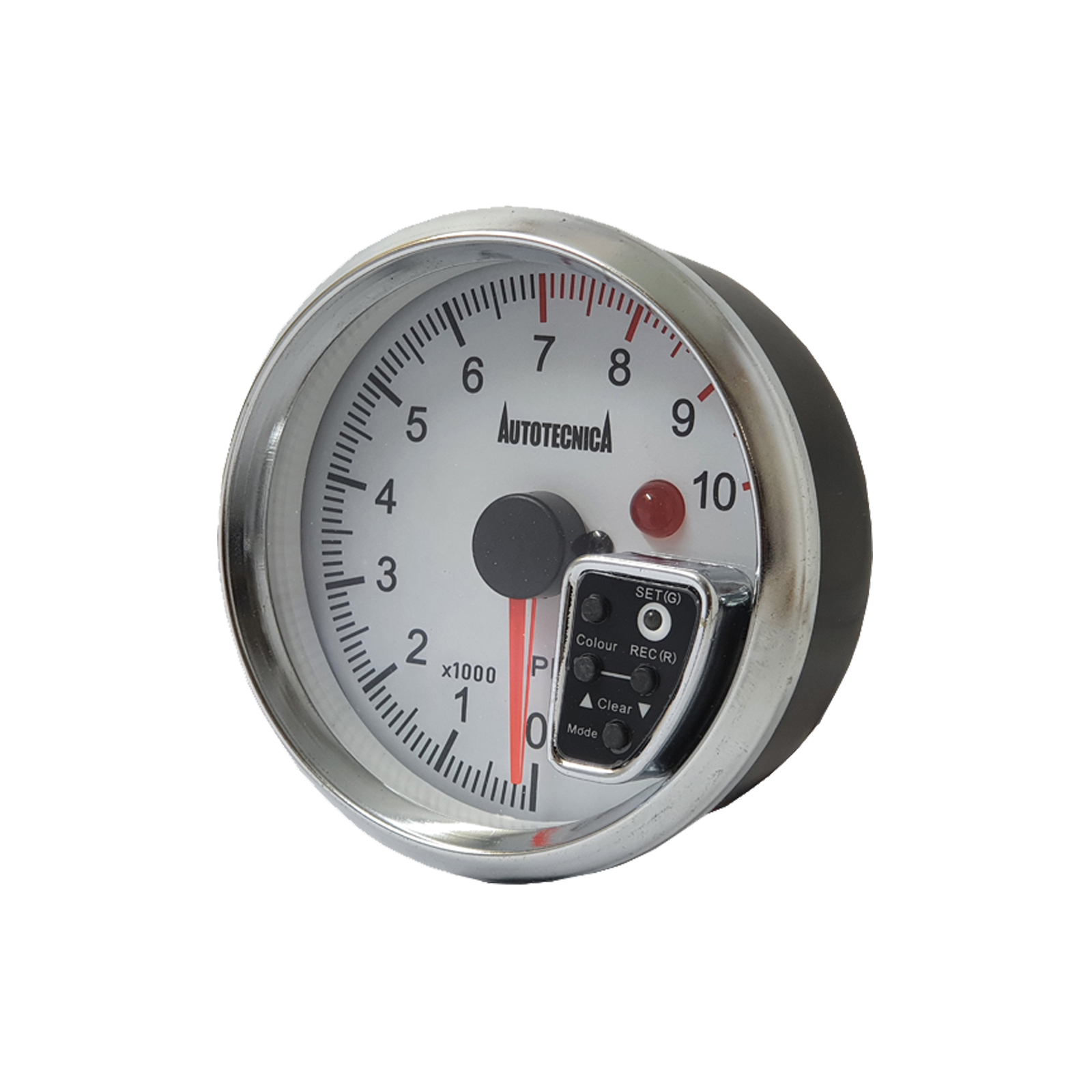Top Reasons Every Motorist Demands a High-Quality Tachometer
Top Reasons Every Motorist Demands a High-Quality Tachometer
Blog Article
The Relevance of a Tachometer in Keeping An Eye On Engine Rate and Performance in Automotive Applications
In the world of automobile design, the tachometer stands as a critical instrument in the driver's toolbox, providing a straight home window into the internal workings of a lorry's engine. Past its function as a simple scale of revolutions per min (RPM), the tachometer acts as an important device for enthusiasts and specialists alike, offering real-time insights right into engine efficiency and health and wellness. Understanding the relevance of this tool exceeds surface-level observations, diving right into the intricate partnership between engine speed, power outcome, and total driving experience. As we explore the diverse function of the tachometer in auto applications, a deeper admiration for its impact on car characteristics and performance starts to arise.
Importance of Monitoring Engine RPM
Keeping track of engine RPM, or revolutions per min, is an essential facet of auto upkeep and efficiency examination. Engine RPM directly associates with the rate at which the engine's crankshaft revolves, suggesting exactly how rapidly the engine is running - tachometer. By keeping track of RPM, mechanics can assess the health and wellness of the engine, find prospective issues, and fine-tune performance. An abnormal RPM analysis may signal problems such as engine misfires, malfunctioning stimulate plugs, or problems with the fuel distribution system. Constantly high RPM readings could suggest aggressive driving habits or the demand for a higher gear change to enhance gas efficiency.
Moreover, monitoring engine RPM is important for performance analysis in racing and high-performance automobiles. In summary, checking engine RPM is not only vital for identifying issues however additionally for optimizing engine performance in various vehicle applications.

Advantages of Real-Time Information
In auto applications, real-time data plays an important function in supplying instant insights into the performance and condition of the car. By continuously keeping track of different specifications such as engine speed, temperature level, gas intake, and extra, real-time information uses countless advantages that add to boosted performance and safety and security when traveling.
Furthermore, real-time data assists in performance optimization by supplying immediate responses on driving practices and engine efficiency. Chauffeurs can adjust their actions in real-time based on this information to accomplish much better gas economic climate and prolong the life expectancy of their vehicle.

In addition, real-time data plays a crucial function in modern vehicle diagnostics, making it possible for technicians to quickly diagnose and deal with malfunctions. This causes lowered downtime, lower maintenance prices, and inevitably, enhanced general car dependability and longevity (tachometer). By utilizing the power of real-time information, vehicle stakeholders can make educated choices that favorably influence both the performance and long life of the automobile
Influence On Equipment Shifts
Reliable equipment shifts in automobile applications considerably influence general performance and driving experience. The tachometer plays an important function in enhancing equipment shifts by supplying real-time engine rate information to the driver. When approaching the redline on the tachometer, it signals the chauffeur to upshift to avoid over-revving the engine and triggering prospective damages. On the other hand, downshifting at the ideal minute can aid preserve the engine in its power band, guaranteeing responsive velocity when needed.
Furthermore, the tachometer help in accomplishing smoother equipment shifts, especially in hand-operated transmissions. By checking engine rate, chauffeurs can execute gear changes at the optimum RPM range, minimizing snagging motions and decreasing wear on the transmission components. This precision on duty changes not only improves driving convenience yet likewise adds to sustain effectiveness.
Enhancing Gas Efficiency
Given the essential function the tachometer plays in enhancing gear changes for efficiency and engine health and wellness, it straight adds to taking full advantage of fuel effectiveness in vehicle applications. By offering real-time feedback on engine speed, the tachometer helps motorists in keeping one of the most effective RPM range for fuel economic situation. When chauffeurs consistently keep track of the tachometer and adjust their motoring routines accordingly, they can stay clear of unnecessary fuel consumption caused by over-revving or lugging the engine.
Moreover, the tachometer assists motorists identify one of the most fuel-efficient gear to be in at any type of given minute, preventing the engine from functioning tougher than necessary. This is particularly important throughout velocity and cruising, where being in the appropriate equipment can considerably influence gas efficiency. In addition, the tachometer can notify drivers to try here prospective mechanical problems that could be adversely affecting gas economic situation, such as a sliding clutch or a clogged up air filter. To conclude, the tachometer works as a useful tool in boosting fuel effectiveness by promoting ideal driving navigate to this website behaviors and determining locations for renovation in the car's performance.

Maximizing Engine Durability
The tachometer's duty in checking engine speed and performance contributes in guaranteeing the longevity of auto engines. By utilizing the tachometer effectively, drivers can optimize engine durability via conscious RPM management. Constantly revving an engine expensive can lead to excessive damage on crucial components, such as the pistons, valves, and bearings. In time, this can lead to reduced engine efficiency and potential breakdowns. Checking the tachometer permits drivers to stay within the recommended RPM array for their lorry, preventing unnecessary strain on the engine and prolonging its lifespan.

Conclusion
Finally, the tachometer plays a vital role in keeping an eye on engine rate and efficiency in automotive applications. By supplying real-time data on RPM, it enables efficient equipment shifts, improved gas effectiveness, and taken full advantage of engine longevity. This tool is crucial for preserving optimum engine performance and making sure the overall capability of a vehicle.
Report this page